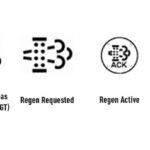For automotive technicians and serious DIY enthusiasts working with older Chrysler, Dodge, and Jeep vehicles, the Drb 3 Scan Tool holds a legendary status. Discussions in online forums, like the one we examined on 300mclub.org, reveal ongoing interest in this tool, particularly regarding its availability and capabilities in today’s market. Let’s delve into what makes the DRB 3 scan tool special, why it’s still talked about, and whether it remains a viable option for diagnosing and repairing older Chrysler vehicles.
What is the DRB III Scan Tool?
The DRB III (Diagnostic Readout Box III) is a professional-grade diagnostic scan tool specifically designed for Chrysler Corporation vehicles manufactured from the late 1980s up to the mid-2000s. Before the widespread adoption of OBD-II and CAN bus systems, Chrysler utilized proprietary diagnostic protocols, and the DRB III was the dealer-level tool for accessing and interpreting this data. Unlike generic OBD-II scanners that offer basic code reading and clearing, the DRB III provides in-depth diagnostic capabilities, including:
- Reading and clearing diagnostic trouble codes (DTCs) across all vehicle systems: Engine, transmission, ABS, airbags, body control modules, and more.
- Live data streaming: Monitoring real-time sensor data to pinpoint intermittent issues and system malfunctions.
- Actuator testing: Commanding specific components to activate (e.g., turning on fuel pump, cycling solenoids) for targeted diagnostics.
- Module programming and configuration: Essential for replacing or reprogramming powertrain control modules (PCMs), transmission control modules (TCMs), and other electronic control units.
- Proprietary Chrysler system access: Communicating with systems and modules that generic scanners often cannot reach on older Chrysler vehicles.
DRB III Availability and Pricing in the 21st Century
The original forum post highlights a key point: the DRB III is still available for purchase through TechAuthority, the official source for Chrysler service information and tools. However, as noted in the forum, the price is substantial. While the exact price may vary, forum members mentioned figures exceeding $6000, reflecting its position as a professional, albeit legacy, tool.
Concerns were raised in the discussion about whether the currently available DRB III is an “aftermarket version” with reduced capabilities compared to the original factory tool. While TechAuthority is the official channel, it’s crucial for potential buyers to verify the exact specifications and functionalities of the tool being offered to ensure it meets their diagnostic needs. Furthermore, the forum discussion touches upon whether these tools are sold to individuals or primarily intended for dealerships and professional repair shops. Checking directly with TechAuthority about purchasing requirements is advisable.
DRB III Capabilities Compared to Modern OBD-II Scanners
A crucial point raised in the original forum thread is the significant difference in capability between a DRB III and a standard OBD-II scan tool. While OBD-II scanners are sufficient for basic diagnostics on a wide range of vehicles, including newer Chryslers, they lack the depth of coverage and specific functionalities needed for older models.
The DRB III’s ability to perform module programming and configuration is a key differentiator. For technicians working on older Chrysler vehicles, especially when replacing or reprogramming control modules, a DRB III or an equivalent tool capable of handling Chrysler’s older protocols is often indispensable. Generic OBD-II tools simply cannot perform these advanced functions on these older systems.
Is Investing in a DRB III Scan Tool Worthwhile Today?
For the average car owner, investing in a DRB III scan tool is likely not practical due to its high cost and specialized application to older Chrysler vehicles. Modern OBD-II scanners offer sufficient diagnostic capabilities for most common issues in newer vehicles and are far more affordable.
However, for professional automotive technicians specializing in older Chrysler, Dodge, and Jeep vehicles, or for serious DIY enthusiasts with a collection of these classic models, the DRB III may still hold value. Its ability to access and diagnose systems beyond the reach of generic tools, along with its module programming capabilities, can be essential for comprehensive repair and maintenance.
Before investing in a DRB III, it’s vital to:
- Confirm compatibility: Ensure the tool covers the specific Chrysler models and years you work on.
- Verify features: Understand the exact capabilities of the tool being offered, especially regarding programming and system coverage.
- Consider alternatives: Explore if there are more modern scan tools that can adequately cover the diagnostic needs of older Chrysler vehicles, potentially offering a better balance of cost and functionality.
In conclusion, the DRB 3 scan tool remains a significant piece of diagnostic equipment for legacy Chrysler vehicles. While its high cost and specialized nature make it unsuitable for general use, it continues to be a valuable tool for professionals and dedicated enthusiasts working with these older models, offering capabilities that modern, generic scanners often cannot replicate.
